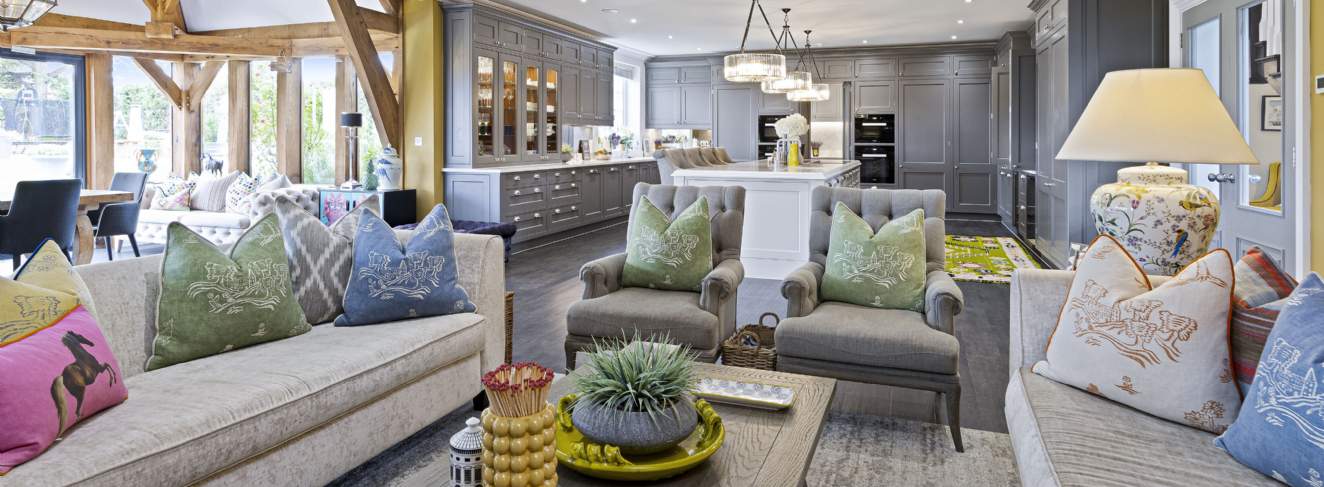The desire for space and lifestyle change continues to shape house price growth across the prime regional markets. But the real stars have been country houses in the Cotswolds, private estates of Surrey and prime coastal areas. In these markets, the rarity factors – whether a rarely available type of property, the most sought after locations, or simply the very best view – have combined with high levels of buyer demand and wealth, to create pockets of extremely strong market conditions.
Frances Clacy
1. Pandemic-fuelled race for space still a key driver
The desire for space and lifestyle change, which has dominated the prime regional markets since the UK came out of lockdown more than 18 months ago, continues to shape house price growth.
Values increased by 1.5% in the final three months of 2021, a slight slowing from the 2.0% recorded in Q3, but annual growth increased to 9.3% – the highest figure since September 2010.
The strongest performing regions during the past year, and indeed the past 18 months, have been the markets beyond the commuter zone in the South of England (+10.4% in 2021), which include relocation and coastal hotspots, and the suburban markets of London’s commuter belt that have benefited from a flow of wealth out of the capital.
2. The 2021 leader board
Country houses in the Cotswolds, the private estates of Surrey and prime coastal areas were the strongest performing markets in 2021. Here, the rarity factors – whether that be the type of property, the most sought after locations or simply the very best view – have combined with high levels of buyer demand, to create pockets of extremely strong market conditions.
The value of £2m-plus country houses in the Cotswolds have increased by almost a quarter (23.4%) over the past year, reflecting their scarcity and most-wanted status. Demand has been seen from local upsizers, relocators from across the UK and overseas and aspiring second home owners. Similarly, prices in St George’s Hill, Surrey’s exclusive gated estate, rose by more than a fifth (21.8%) during the past year.
For prime coastal markets, including Devon and Cornwall, annual price growth averaged 15.6% in 2021 driven by strong demand for premium properties and shrinking supply. But, quarterly increases slipped back to 2.5% in the final three months of the year as the summer frenzy gave way to less frantic market conditions.
3. £2m-plus
Data from TwentyCi for the first 11 months of 2021 indicates that there were 82% more agreed sales for £2m-plus property outside of London than in the same period in 2019. When looking at markets that have had at least 40 of such sales, the local authority of New Forest, which covers much of the New Forest National Park, has seen the greatest uplift (+360%) in sales at this level.
Other locations which make up the top 10 include Cotswolds (+292%), Wiltshire (+225%) and South Oxfordshire (+208%) all of which are more traditional hotspots for buyers at this price point, some of whom will be buying holiday homes or weekend retreats.
More urban or suburban areas such as St Albans (+327%), Epping Forest (+221%) and York (+200%) are also included in the top 10, highlighting that the need for more space isn’t just confined to country and rural markets.
4. The city story
Since the summer, prime regional cities have also seen stronger levels of demand, leaving price growth now broadly on par with surrounding village and rural locations.
Growth averaged 1.6% in the final quarter and totalled 9.1% during 2021 in prime urban markets. This compares to 1.4% and 9.4%, respectively, for the prime areas surrounding towns and cities. Bath, Oxford and Winchester, in particular, have seen strong levels of growth over the past year with values rising by more than 10% in each on average.
5. Will current trends continue?
The strong demand seen during the past 18 months has meant that well-priced properties have been selling quickly, particularly those in the most sought-after locations. As a result, there still remains a lack of available stock across much of the market.
Demand still remains incredibly strong and although an easing is likely at some point, it hasn’t happened yet. Changes to people’s working habits will continue to underpin demand from those who can take advantage of greater flexibility and widen their previous search areas. The emergence of different Covid-19 variants, such as Omicron, could exacerbate these trends by leading to more home working in the short and long term.
More generally, continually rising interest rates and the prospect of increased taxes is expected to gradually squeeze the spending power of wealthier households and so whilst we anticipate house price growth will continue, levels of growth may slow, particularly given the strong price growth we have seen throughout last year and in 2020.
Longer term, the price differential between prime markets in the South of England and those in Scotland, the Midlands and the North of England leaves more capacity for price growth in the latter. As such, we expect these to be the top-performing regions over the five-year period to 2026.
PRIME PRICE FORECASTS
.jpg)
Note *Within the M25 **Within a 30-minute commute †Within a one-hour commute. These forecasts apply to average prices in the second-hand market. New build values may not move at the same rate.
Source Savills Research
< View our latest Q4 2021 updates here
Book a market appraisal
For more information, please contact your nearest regional office or arrange a market appraisal with one of our local experts.
